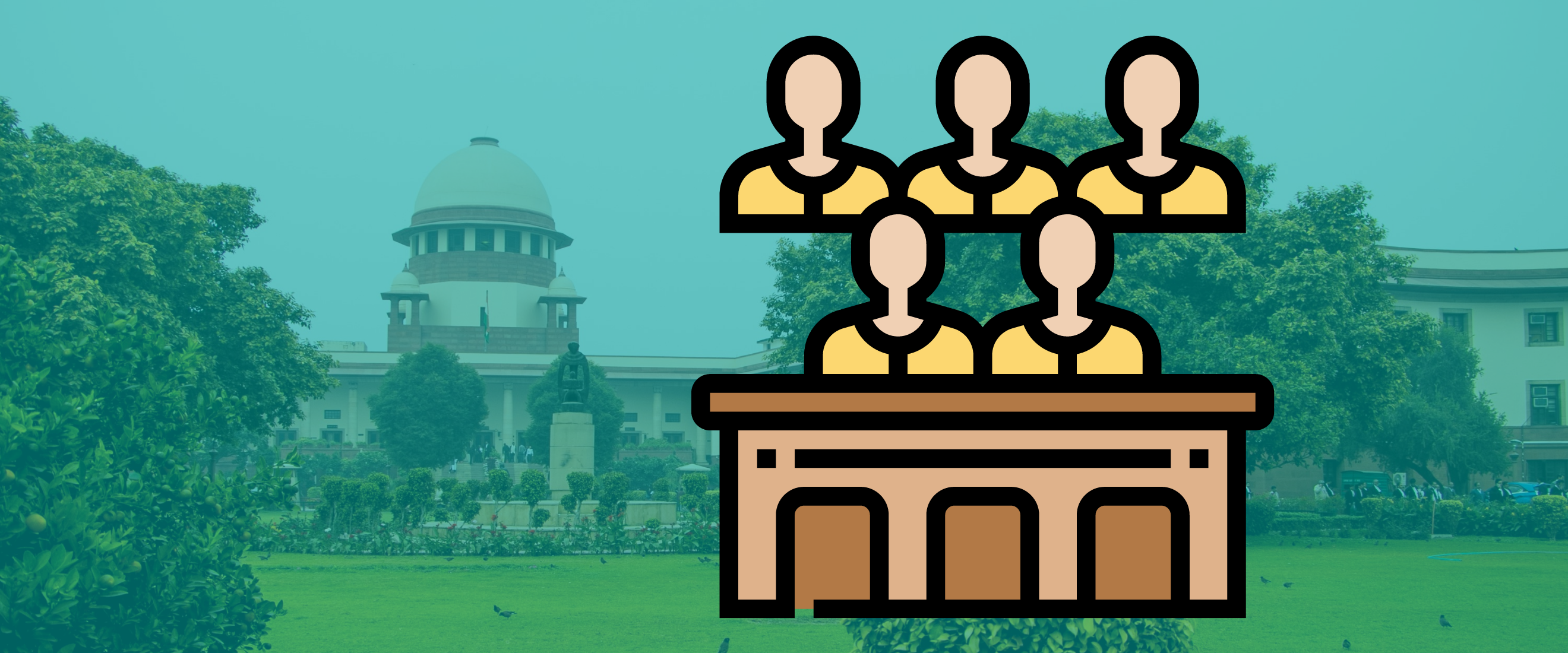Analysis
How Do We Appoint Supreme Court Judges?
The judiciary appoints its own judges - a common source of conflict with the executive. But what does the process entail?

On August 26th, the President appointed nine judges to the Supreme Court, a mere nine days after they were recommended by the collegium. The SC now nears full strength with 33 sitting judges out of a sanctioned strength of 34. And by convention of seniority, the Court will have its first woman Chief Justice of India in B.V. Nagarathna J.
While these appointments seem to have gone smoothly, the road to the current collegium system of appointments has been a winding one. There has historically been tension between the judiciary and the executive over who wields the most power in appointing judges. This has played out over three Supreme Court cases popularly known as the ‘three judges cases’ as well as the NJAC controversy.
Article 124 of the Constitution gives the power of appointment to the Union (through the President) after consulting with the Chief Justice of India (CJI). This was upheld in the first of the ‘three judges cases’ in 1981. The Court held that the ‘ultimate power’ of appointment lay with the President, while emphasising that the CJI must be properly consulted.
However, the President would see this ‘ultimate power’ be diluted in the ‘second judges case’ (1993). The 9-judge bench stated that the CJI must be given the primary role in appointments to ensure judicial independence. The idea of a collegium was born from this ruling. However, its exact role and composition was not clear.
In the ‘third judges case’ (1998), the SC clarified the role of the collegium and laid down guidelines for its functioning. The collegium would comprise the CJI and the four senior-most judges of the Court.
The collegium system has been widely criticised for operating under a ‘cloud of secrecy’: the factors considered and the process behind appointment decisions are not transparent. For example, there were no recommendations for the SC for the last two years. Reportedly, this was because Justice R.F. Nariman, who was a part of the collegium from March 2019, insisted that Kureshi J, a senior HC judge, must be recommended first (plausibly because other collegium members did not agree).
In 2014, Parliament passed the National Judicial Appointments Commission Act, 2014 (NJAC). The Act replaced the collegium with a commission led by the CJI comprising the two senior-most judges of the SC, the Minister for Law and Justice and two eminent persons (selected by the CJI, Prime Minister and the Leader of the Opposition). It was meant to limit the authority exercised by the judiciary and involve non-judicial members in the appointments process.
The NJAC however, was challenged in the Supreme Court and was struck down in 2015. The Court once again invoked the independence of the judiciary and held that the NJAC violated this independence. The collegium system was revived and India remains the only constitutional democracy where the judiciary appoints its own judges.
While this round of appointments has gone through smoothly, the existence of the collegium system in India always keeps alive the possibility of the Executive and the Judiciary coming into conflict.
